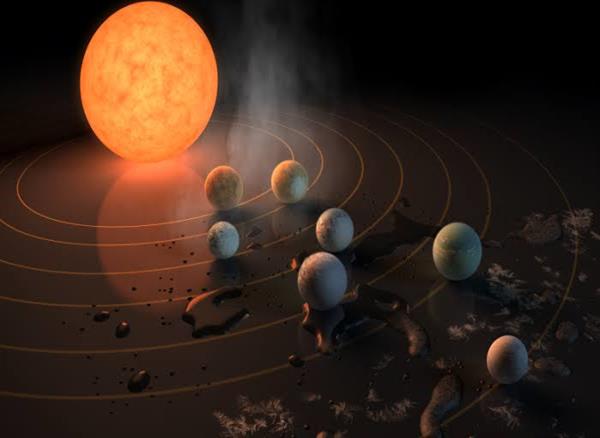Advancements in exoplanet detection techniques have revolutionized our understanding of the universe and the search for habitable worlds beyond our solar system. Here are some of the key advancements in exoplanet detection and the search for habitable worlds:

1. Transit Photometry: Transit photometry is a widely used technique for detecting exoplanets. It involves measuring the slight dip in a star's brightness when a planet passes in front of it, blocking a fraction of the starlight. High-precision photometric instruments, such as NASA's Kepler and TESS missions, have enabled the detection of thousands of exoplanets using this method.
2. Radial Velocity: The radial velocity technique detects exoplanets by measuring the slight variations in a star's motion caused by the gravitational tug of an orbiting planet. High-precision spectrographs, such as HARPS (High Accuracy Radial velocity Planet Searcher), have greatly improved the sensitivity and accuracy of this method, allowing for the detection of smaller and more distant exoplanets.
3. Direct Imaging: Direct imaging involves capturing the actual light emitted by an exoplanet. This technique is challenging as the light from the planet is often overwhelmed by the brightness of its parent star. Advanced adaptive optics systems and coronagraphs are being used to block out the starlight and enhance the contrast, enabling the direct detection of large, young exoplanets.
4. Microlensing: Microlensing occurs when the gravitational field of a foreground star magnifies and distorts the light from a background star. If a planet orbits the foreground star, it can cause additional distortions in the light curve. This technique, known as gravitational microlensing, has the potential to detect distant and low-mass exoplanets that are not easily detected by other methods.
5. Astrometry: Astrometry involves measuring the precise position and motion of a star. The presence of an exoplanet can cause small but measurable shifts in the star's position due to gravitational interactions. High-precision astrometric instruments, like the European Space Agency's Gaia mission, are providing valuable data for the detection and characterization of exoplanets.
6. Characterization of Exoplanet Atmospheres: Advancements in spectroscopy have enabled scientists to study the atmospheres of exoplanets. By analyzing the starlight that passes through or reflects off an exoplanet's atmosphere, researchers can identify the presence of specific gases, such as water vapor, methane, and carbon dioxide. This information helps in understanding the composition and potential habitability of exoplanets.
7. Exoplanet Surveys: Surveys like NASA's TESS mission are scanning large areas of the sky to discover new exoplanets. TESS monitors the brightness of thousands of stars, focusing on nearby and bright stars to identify transiting exoplanets. These surveys are essential in providing a statistical understanding of the occurrence and distribution of exoplanets.
The search for habitable worlds focuses on identifying exoplanets within the "habitable zone" of their star, where conditions may be suitable for liquid water to exist. Advancements in exoplanet detection techniques have led to the discovery of numerous potentially habitable exoplanets. However, confirming habitability requires further investigations, including the analysis of atmospheric composition and the potential presence of biomarkers.
Future advancements in exoplanet detection will include the launch of next-generation space telescopes like the James Webb Space Telescope (JWST), which will provide unprecedented capabilities for studying exoplanet atmospheres and potentially identifying signs of habitability.
Overall, the advancements in exoplanet detection techniques have opened up an exciting era of exoplanetary exploration, offering insights into the diversity of planetary systems and bringing us closer to the ultimate question of whether life exists elsewhere in the universe.